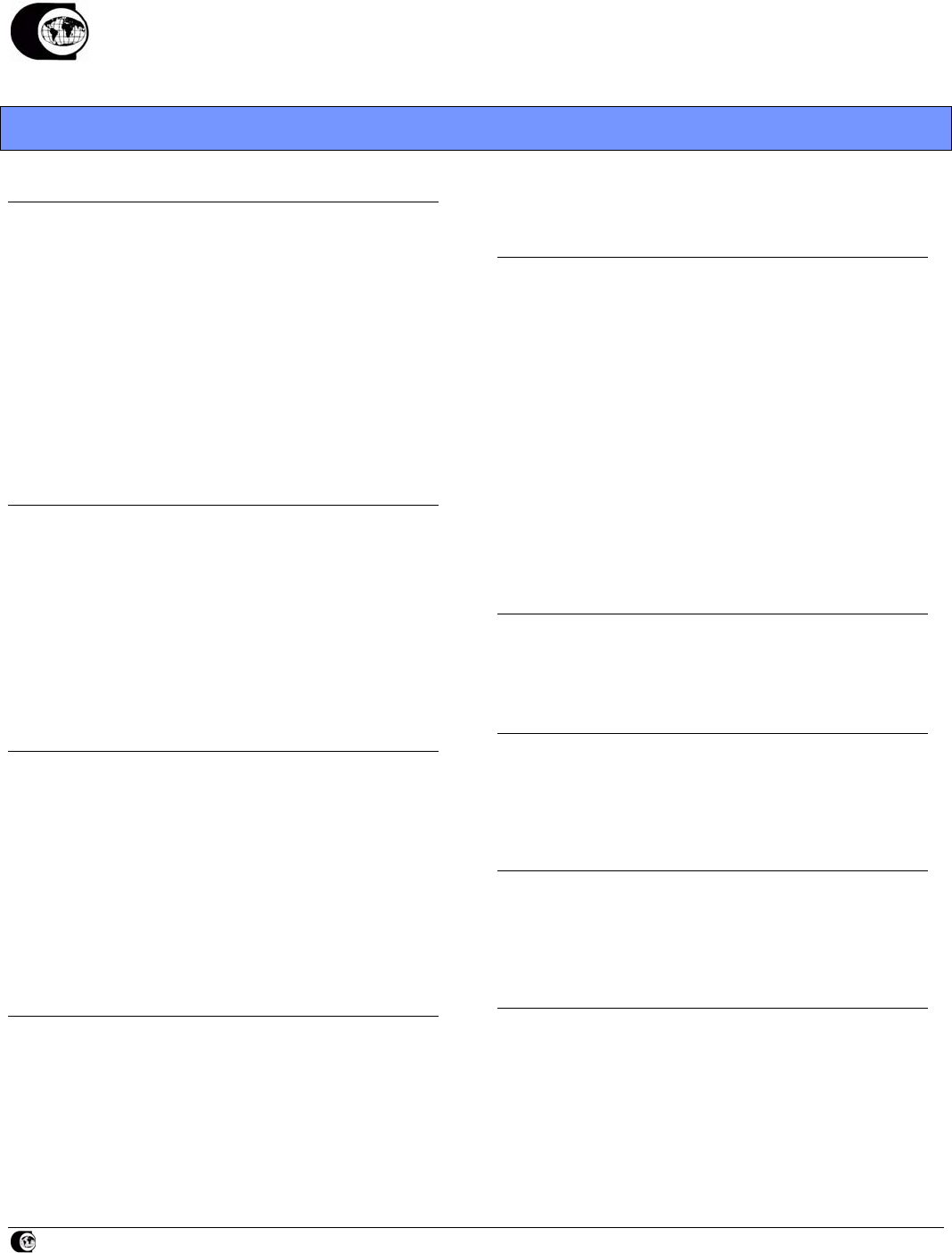
Phone: 317-337-9813 www.continentalchillers.com
Fax: 317-337-9816
Continental Single Phase Chillers
UniPac™
Installation and Application Data
General
Continental UniPac™ Air Cooled Packaged Chillers models USAC
are designed for outdoor installations and normal exposure to summer
and winter conditions. The vertical condenser air discharge feature
allows rooftop or ground installations. Horizontal units are also available.
The enclosure door is provided to protect the electrical components
against unauthorized access. However, consideration should be given to
a field-installed protective fence to further reduce possibility of accidental
damage or unauthorized entry, especially for ground level installations.
Field installed fence must have a minimum of 50% open area.
Continental UniPac™ Water Cooled Packaged Chillers models
USWC ar designed for indoor installations and normal indoor conditions.
However, if outdoor installation is required, the factory option of a
complete unit enclosure and heater tape with thermostat for the cooler
and condenser must be ordered.
The following guidelines are recommended:
Location for Air Cooled Systems
1. Whether it is a rooftop or ground level installation, select a place with
unrestricted fresh air supply for the air cooled condenser and minimum sun
exposure.
2. Avoid locations between structures, beneath windows, or any other restriction
that may affect adequate air supply to the condenser and where normal operating
sounds may be objectionable.
3. The condenser fans are propeller type and are not designed for use with duct
work
Location for Water Cooled Systems
1. The preferred location for the water cooled system is a proper plant room
with at least 4ft access on all four sides.
Foundation
All chillers should be mounted on a flat and level foundation, ground,
or rooftop, capable of supporting the total operating weight of the unit
and service personnel.
(a) Ground Level It is important that the units be installed on a
substantial base that will not settle, causing strain on the liquid lines, resulting in
possible leaks. Mounting holes (9/16”) are provided in the unit steel channels for
bolting the unit to its foundation. An independent one-piece concrete slab, not tied
to the main building and with footers extended below the frost line, is
recommended.
(b) Roof-top Rooftop installations will require consideration by an
architect and contractor to have adequate structural strength to safely support the
entire operating weight of the unit and service personnel. Structurally transmitted
vibration and sound must be avoided by mounting the unit on proper isolators.
Clearances
1. Air cooled systems draw air from all sides; therefore units must be
installed with sufficient clearances for air entrance to the condenser coil,
for air discharge away from the condenser, and for servicing. Minimum
clearances for all units are 4 feet on all sides.
2. In installations where winter operation is intended and snow
accumulations are expected, additional height must be provided in order
to insure normal condenser airflow.
3. When free airflow to the condenser is reduced or restricted,
condenser air may be recirculated, considerably reducing system
capacity and increasing power consumption. All ratings are based on
free air discharge.
4. For multiple units, a minimum lateral clearance of 10 feet between
two units is recommended.
Field Piping
1. If a circulating pump is field furnished, the pump must discharge into the
cooler first and then through the cooler to the system.
2. Provide stop valves on all inlet and outlet piping to facilitate servicing.
3. Provide drain connections at low points to permit drainage of cooler and field
piping.
4. Provide air vents at high points easily accessible for servicing
5. Provide a strainer on the inlet to the cooler.
6. Provide wall hangers and rubber isolated piping hangers to reduce sound
and vibration transmission though liquid piping.
7. Provide thermometers and pressure gauges for installation in the inlet and
outlet water lines. These items are available as optional features and are not
included in the standard unit.
8. Chilled water lines should be insulated to reduce heat pick up and prevent
condensation.
9. For winter low ambient operation, it is recommended that a heater cable of 4
watts per lineal foot of pipe be installed, and exposed lines be properly insulated
to protect against freeze conditions.
10. Flush all chilled water piping prior to final connection to the UniPac™ chiller
systems.
Water Treatment
Adequate water treatment should be determined locally, depending
on the local water quality and the type of system. Any foreign material or
dirt in the water system can adversely affect the performance of the
UniPac™ unit.
Freeze Protection
Continental recommends use of a premixed glycol (Propylene or
Ethylene) or HVAC heat transfer fluids. Contact factory for more details.
Automotive antifreeze is not recommended because these often include
silicates. Silicates end up coating the heat transfer surface reducing
efficiency, fouling the system and shortening the life of the pump seals.
Corrosive Atmosphere Operation
Continental offers the following choices of condenser coil
combinations for various corrosive atmospheres.
Blygold or Heresite coating for aluminum fins; Copper Fins with
Blygold or Heresite coating or complete unit coated with Blygold, Imron
or Heresite.
Field Electric Wiring
All field wiring must be in accordance with applicable local/national
codes and ordinances
Continental chiller systems are factory wired for optimum reliability.
Controls are factory set for the operating conditions. These controls must
not be field modified without written consent from Continental; otherwise
the warranty is voided. The use of a simple remote switch or timer is
permitted but it must be connected to the Continental control panel at
points specifically indicated for that purpose.
Remote chilled water set point option is available- see under
options.
11
